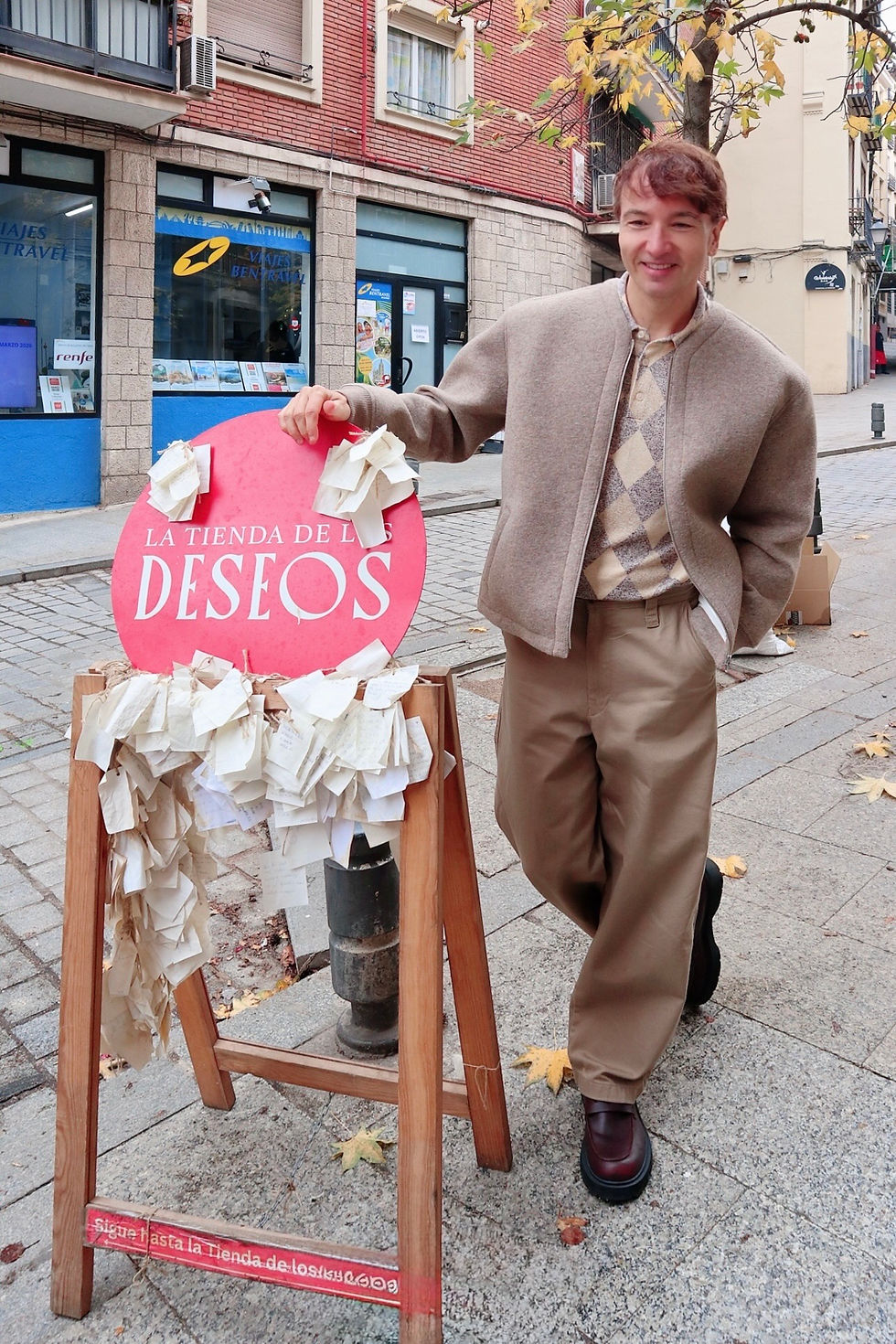CAMINANDO POR SEÚL
- The Trendy Man

- 30 ene 2019
- 3 Min. de lectura
Actualizado: 18 nov

Os prometo que no os voy a marear con cifras pero a qué no sabíais que en área metropolitana de Seúl viven la friolera de 25 millones de personas. Os lo digo para que os imaginéis lo difícil que es encontrar rincones con tradición y en los que parezca que el tiempo no lo ha borrado todo.
En la capital surcoreana ese lugar tiene un nombre Bukchon, un barrio de casas antiguas y calles empinadas que, por si solo, es una atracción.
Confieso que me esperaba mucho más pero enseguida me puse en la piel de sus vecinos y supe apreciar el enorme esfuerzo que hacen año tras año para no sucumbir a las presiones urbanísticas de los especuladores inmobiliarios.
Andar por sus solitarias calles es un placer para los sentidos.
Bukchon Hanok Village is home to hundreds of hanoks, traditional Korean houses, that date back to the Joseon Dynasty. Today, many of these operate as cultural centers, guesthouses, restaurants and tea houses, providing visitors with an opportunity to experience, learn and immerse themselves in traditional Korean culture. Join me as we explore the neighborhood’s traditional architectural structures and the enchanting alleys that wind through them.
Due to its close proximity to the city’s two primary palaces, it was originally inhabited by high-ranking government officials and their families. Nobility lived in hanok, traditional homes that were built in a specific architectural style, designed to maintain balance with the surrounding topography and were generally constructed using elements such as long, curved roofs and ondol flooring that helped keep the homes warm in the winter.





Aquí en Bukchon era donde residían los altos funcionarios o los miembros de la realeza de la antigua monarquía coreana. En esta aldea aún son muchas las casas tradicionales de la clase alta que se han conservado durante siglos y que mantienen el estilo arquitectónico característico de los hanok. Algunas de estas viviendas aún son exclusivamente residencias familiares pero otras se han convertido en tiendas, pequeños hoteles, restaurantes o tiendas de artesanía.
Todo el barrio es como un laberinto que se puede recorrer sin rumbo buscando sus rincones más atractivos. Algo que hay que tener muy presente al recorrer las calles de Bukchon es que es un barrio residencial, no una mera atracción turística. Por ello en las puertas de muchas casas se recuerda que hay que ser discreto, no gritar y por supuesto no llamar para ver si puedes entrar a ver la casa. Aquellos hanok abiertos al público tiene la puerta de la calle abierta y siempre se verá que entra y sale gente, además de algún cartel que indique que se un tienda, una galería de arte o un restaurante.
Due to societal changes, commoners began to occupy the neighborhood, and hanoks became associated with economically marginalized families who could not afford more modern housing. Many were torn down and left to decay as urbanites flocked to the high-rise apartment complexes that define Seoul’s skyline today. In fact, many of Bukchon’s hanoks were torn down to make way for office buildings and contemporary housing, up until fairly recently.
Fortunately, new conservation efforts, including strict legislation, have been put in place to protect the area’s remaining houses, which number around 900.
In fact, thanks to their historical importance and beautiful aesthetic, the hanok has become a trend in recent years, with many of the younger generation purchasing and renovating the structures with eco-friendly, sustainable materials.








Este es, sin lugar a dudas, uno de los lugares con más encanto de Seúl. Me gusta porque es auténtico y no se ha transformado para los turistas ( de hecho no hay ninguna casa-museo ni restaurantes con platos tradicionales sino pequeñas cosas de comidas y poco más).
Bukchon es un buen lugar para comprar pequeños recuerdos del viaje o para descubrir tiendas de moda y complementos de diseñadores coreanos.
Pasear por esta zona de la capital norcoreana es como meterse en una capsula del tiempo y pasar, en tan solo unos metros, del siglo XXI al X.
La experiencia merece la pena.
Nevertheless, the real charm of Bukchon lies in its tiny alleys, which wind and twist between its age-old, still-lived-in hanoks, where everyday life runs its course. Here, housewives hang their laundry and set out hot peppers to dry in the sun. Children play hide and seek, peeking around the corners of the narrow streets. The elderly watch on, conversing among themselves. For visitors, the alleys of Bukchon provide an interesting look into the lives of ordinary Koreans.
Today, Bukchon is favorited by locals and tourists alike. And, thanks to its unique atmosphere, created by a stark contrast of old and new, it will no doubt remain to be for quite some time.

El abrigo que llevo puesto es de MIXXO KOREA
The coat I am wearing is from MIXXO KOREA






Comentarios